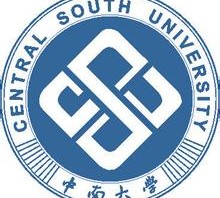I. Directions: Translate the following words, abbreviations or terminology into their target language respectively. (30′)
1)market access: 市场准入
2)venture investment: 风险投资
3)trade liberalization: 贸易自由化
4)ecosystem: 生态系统
5)artiflcial intelligence: 人工智能
6)innovation-incentive mechanism: 创新激励体制
7) the Millennium Development Goals: 千年发展目标
8)the Beijing Olympic Mascots: 福娃
9)cultural heritage: 文化遗产
10)national treatment: 国民待遇
11)NPC: 全国人民代表大会(the National People’s Congress)
12)IMF: 国际货币基金组织 International Monetary Fund
13)UNDP: 联合国开发计划署(United Nations Development Program)
14)IAEA: 国际原子能机构 International Atomic Energy Agency
15)UNESCO: 联合国教育、科学及文化组织(United Nations Educational,Scientific and Cultural Organization)
16) 信 、达 、雅: faithfulness, expressiveness, elegance
17) 功能对等: functional equivalence
18) 团 队精神: Teamwork
19) 统筹兼顾: give overall consideration; make overall plans and take all factors into consideration; overall consideration and all-round arrangement
20) 自主创业: self-employed
21) 建设节约型社会: to build the conservation-oriented society
22) 公益性文化事业: non-profit cultural undertakings
23))从善如流: follow correct opinions or well-intentioned advice like water flowing swiftly and smoothly downward; follow good advice readily
24)两元经济结构: dual economic structure
25) 科学发展观: Scientific outlook on development
26)“ —站式 ”办公: One-stop Service
27) 更快 ,更 高 ,更 强: Faster,Higher,Stronger
28)加强务实合作: strengthen/deepen pragmatic cooperation
29)生态补偿机制: a mechanism for ecological compensation
30)趋利避害: draw on advantages and avoid disadvantages
II. Directions: Translate the following two source texts into their target! language respectively. (120′)
Source Text 1:
A. Honorable Your Excellencies Ministers and delegates,
Honorable specially invited guests of Hong Kong and Macao Special Administration Region governments, Ladies and gentlemen,
I am honored to be present at the Cultural Asia Ministerial Forum along with ministers and delegates in charge of cultural affairs from 23 Asian countries as well as specially invited guests of Hong Kong and Macao Special Administration Region governments. Looking all around, I see not only many acquaintances but also new faces. The cooperation offers us an opportunity to gather, to become acquainted and make friends. The theme of this Cultural Asia Ministerial Forum is “Cultural Asia”. Culture resembles a gentle breeze and light rain that nurtures and enriches us; and it also serves as a strong tie that binds and links us.
Entering the 21st century, the whole globe is carrying out discussions on preserving cultural diversity against the background of economic globalization. UNESCO’s Universal Declaration on Cultural Diversity, five international network meetings on cultural policies and two Asia-Europe Culture Ministers Meetings gradually bring home to us the importance of regional cooperation to Asian development and the equal stress on politics, economy and culture. Asian countries therefore commence active explorations in regional cultural cooperation based on log-term bilateral cultural exchanges. Two Meetings of the Asian Ministers Responsible for Culture and Arts and the AMCA Plus Three, two Regional Expert Meetings and three Asia Cultural Cooperation Forums in Hong Kong were held in Asia. The past five years was a development phase of great importance in the world and Asian history of culture and civilization, in which cultural ministers and officials present today participated to varying degrees.
参考译文:尊敬的各位部长阁下、各国代表团成员,
尊敬的港澳特别行政区政府特邀嘉宾,
今天能与亚洲23个国家文化艺术主管部门的部长、代表团成员,以及港澳特区政府特邀嘉宾共同出席 亚洲文化部长论坛,我感到非常荣幸。环顾会场,我看到许多熟悉的面孔,也看到一些新的面孔。通过文 化合作创造亚洲繁荣的共同目标使我们相聚、相识并成为好朋友。这次文化部长论坛的主题叫作“文化亚 洲”。文化犹如春风细雨,滋润着人们的心田,文化犹如坚韧的纽带,把我们的心连在一起。
进入21世纪,整个世界开展了在经济全球化背景下保持文化多样性的大讨论,联合国教科文组织通过 了《文化多样性宣言》,世界上举行了 5次文化政策国际网络会议和2次亚欧文化部长会议。通过这些有益 的活动,亚洲各国逐步认识了区域合作对亚洲发展的重要意义,意识到在区域性合作中应保持政治、经济 和文化合作并重,并在长期开展双边交流基础上开始了区域文化合作的积极探索。亚洲地区举行了 2次东 盟与中日韩(10+3)文化部长会议,2次区域性文化专家会议和3次在香港举办的“亚洲文化合作论坛” 过去的5年是世界和亚洲文化与文明史中具有重要意义的发展阶段,今天在座的各位部长和文化官员都不 同程度地参与了这一段重要的发展过程。
Source Text 2:
我们在参观博物馆时,常常看到各种古代铜镜。它是我国古代人民用来整容的家庭日用品。这些铜镜大 多是从古墓中出土的,也有少数是传世之物。
早在公元前11世纪,我国先民已经使用铜镜了。战国时期,铜镜在民间盛行。镜的正面磨光发亮,背 面有的饰单层或双层花纹,常见的有兽面纹,花叶纹、龙凤纹等。西汉时期,铜镜较厚重,纹饰多几何图案、神人和禽兽纹等。“长相思”、“毋相忘”、“长富贵”、“乐未央”等。内容多是通俗的吉祥语。宋、元时期出现了圆镜、长方镜、棱镜、八棱镜和带柄手镜等。清代以后逐渐被玻璃镜所代替。
参考译文:Whenever we visit a museum, we see several of ancient bronze mirrors. Used as a household necessity for dressing by the ancient people, these bronze mirrors were mostly unearthed from ancient tombs, while some are kept as heirlooms.
Our ancestors started to use bronze mirrors in as early as the 11th century B.C. During the Warring States period, bronze mirrors prevailed among the populace. The front side of the mirrors, after being polished, glistens while the backside is embellished with single-layered or double-layered patterns, among which the commonly seen are those of animal faces, flowers and leaves, dragons and phoenixes. During the Western Han period, the bronze mirrors used to be relatively thick and heavy. Most of the decorative patterns were of geometrical forms, supernatural figures, or fowls and animals, accompanied by inscriptions of only three or four characters with such meanings as “eternal love”, “never to forget”, “wealth for ever” and “everlasting happiness”. The content frequently dealt with common well washings. During the Song and Yuan Dynasties the bronze mirrors appeared in all shapes: round, rectangular, rhomboidal, octagonal, and those with a handle. Since the Qing Dynasty, however, the bronze mirror has gradually given way to the glass mirror.
中南大学MTI真题下载:百度云
真题来自互联网 短语翻译答案由Mtizt.com提供

请问有另外两科吗